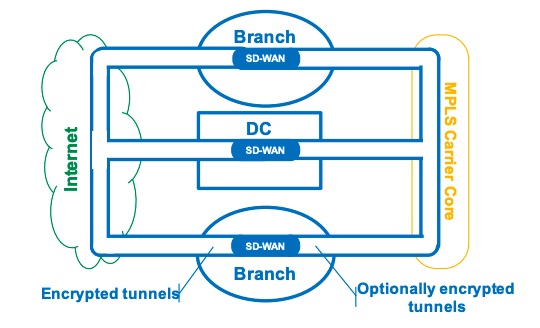
What is the most essential step in any wireless network design? It's planning, and it's particularly important when it comes to supporting new business applications and technology initiatives.
Successfully deploying a wireless network solution is more than just installing a bunch of access points and hoping that they work. WiFi networks have grown increasingly complex and they require the right design for business operations to run smoothly.
With most businesses today using cloud-based applications and IoT devices, all of which that require WiFi connectivity, it's mission-critical that every business has a reliable wireless connection to keep employees working and customers satisfied.
"90% of WiFi problems are caused by having a bad design from the start"
One of the largest challenges that occurs when looking for a proper network design is in finding the right solutions partner.
For example, a lot of VARs (Value-Added Resellers) lack the engineering capabilities to create a proper WiFi design and can only facilitate selling you hardware (access points, switches etc).
There are two main problems with this process. First, implementing a reliable WiFi network requires a lot more than just hardware, and second, how do you know what you need if you haven't done any engineering on the front-end?
When this happens, we find businesses that have either purchased too much equipment, not enough, or they have purchased the wrong type of products. In any case, your wireless network will not perform optimally.
Therefore, you need to engage with a solutions provider that has the necessary expertise and experience to provide you with the right wireless network design to meet your requirements.
We are here to make sure that you have all the information you need to ask the right questions, so you get the best possible network design for your company.
First - Do you even need a new WiFi design?
If you have a building with an existing network and are experiencing problems, there is a possibility that you don't even need a new WiFi design. The first step is to determine what the issues are by getting a complete WiFi analysis.
Only an engineer with the right amount of experience and specialized certifications can execute a WiFi analysis. They will be able to take your existing needs, provide a comprehensive analysis of your current environment, and offer a remediation plan based on the results.
There are a lot of moving parts and if your network is under 4 years old, chances are that your wifi problems can be resolved by adjusting what you already have implemented. Perhaps you just need a few more access points, maybe you need to turn some off, maybe the configuration needs some fine-tuning or perhaps you just need the installation to be corrected.
There are several possibilities before a new design is needed that could solve the issue, but until you complete a wireless assessment, we won't know for sure.
If it is established that you have a network that needs a new design, here's what should be included in a wireless network design for businesses:
-
Site Surveys
-
An RF Plan
-
A Wireless Capacity Plan
-
A Proper Hardware Check
-
An SD-Wan Solution
-
A Project Scope
Site Surveys
For the most part, we usually start with a predictive design, which is a virtual survey of your site or facility that uses sophisticated simulation tools to create a model of the radio frequency (RF) environment at your location.
A predictive design tends to be quite cost- and time- effective, as well as highly accurate with most sites. If you’re able to supply your building's blueprints or floor plans, you'll get the best results.
While predictive wireless design tools are a very effective first step at planning a wireless system, in some cases, an onsite survey is the first step if the facility is complex, like in a hospital, large warehouse or college campus.
An on-site survey is when an engineer is physically on the site, hence the name, in order to assess the applications that roam across access points (APs), as well as applications that are especially sensitive to latency.
Both the predictive and the on-site survey are going to be one of the first steps, but there is an additional kind of survey that should always be done when your new design is completed.
A validation site survey is performed when an engineer has finished with your new design in order to make sure that the new network has been installed and configured correctly. This verification test is the final test to ensure that the business receives exactly what they required.
Learn more about the different kinds of site surveys through this blog: What's Included with a Wireless Site Survey.
In most cases, all three of these need to be done for an accurate and complete wireless network design.
An RF Plan
After completing an on-site survey, you should also receive an RF plan as part of your design. The RF should show the predictive coverage for your building. The plan should show both the speeds of the anticipated connection, as well as a “heat map” to show you the signal to noise ratio.
A Wireless Capacity Plan
It’s not just about coverage area anymore; it’s also about how many devices you can support, which is called capacity planning. Discuss with your solutions partner about the types of devices and the amount that you are planning to support at your business.
Keep in mind conference rooms or large meeting halls where you know capacity would be a big concern.
A Proper Hardware Check
In relation to capacity planning, making sure that you have the correct hardware for your business is still a crucial element to a design. No two models are manufactured for the same situation; one model access point could be made for 200 users, while another is made for 1,000 users.
"I wouldn't put the same access point that I'd put in a small office building into the Panthers' Stadium," says Erik Portillo, the Director of Engineering at SecurEdge.
It's important to note that although you will need the proper hardware, your design is still going to be the most important thing.
"You can't take a bad product and make it perform well, but you can take a great product and make it perform poorly by using the wrong design."
An SD-WAN Solution
Software Defined Wide Area Solution (SD-WAN)is a service that allows a businesses to have a redundancy, or a backup Internet Service Provider (ISP). This is performed by providing two forms of internet that funnel through a firewall, which also helps with a company's load balancing between the two ISP pipelines.
It allows for both agility and proficiency to a company, while also saving money on connectivity. This is especially crucial for businesses that need to constantly operate.
There is a 92% reduction of internet outages with an SD-WAN solution, according to Nemertes Research.
Whether they use WiFi to save lives, protect money and information, or provide internet access of higher-ed students, making sure that your business is getting an SD-WAN solution in its wireless network design is just the kind of insurance policy that your WiFi needs.

Picture Source: Nemertes Research
A Role-Based Security Design.
When your employees or guests are bringing their personal devices to the office (also known as BYOD), it should be treated differently than someone using corporate-issued devices. Your wireless provider should map out how your business is going to support the security measures around the different groups of users and devices. This is known as "Role-Based Access Control"
A Project Scope
This is where the design turns into an executable project. When the engineers are finished with your design, you will need to make sure you receive a bill of materials for an itemized list of what all is included in your network design project, as well as a timeline for execution - which of course can vary if you are constructing a new site.
A Recipe for Success
"Planning is the most important step for every secure wireless network."
Preparing for the digital transformation, requires a fast, reliable WiFi network. With the exponential increase of IoT devices and cloud-based applications becoming mission-critical to businesses everywhere, being ahead means being prepared and being prepared means having the right wireless network design.
*Editor's note: This blog post was originally posted in March 2013 and has been completely revamped and updated for thoroughness and accuracy.



